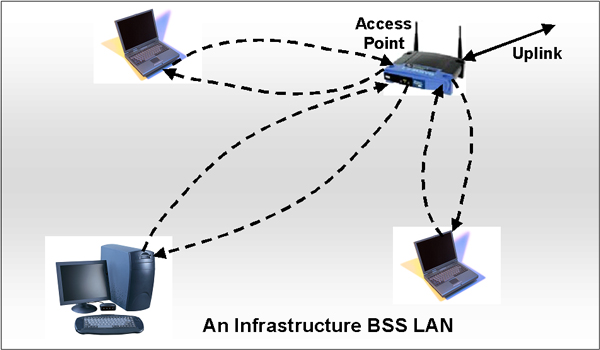
Some Background on Wireless
| Background.
WLAN is the typical acronym used for
Wireless LANs. Since RF - Radio Frequency
wireless is predominating, we will focus on these. Even though
WLANs share a lot of similar characteristics with wired LANs, a fairly
independent set of jargon has developed.
There are three major types of topologies.
A service set is a logical grouping of devices. WLANs provide access using a wireless RF carrier. When a receiving station is within range of at least one transmitter communication can occur. Transmitters preface their transmissions with a SSID - Service Set Identifier. The receiver makes use of the SSID to filter through the signals it receives to locate those it wants to listen to.
|

IEEE Specs. Most core wireless characteristics fall under the province of the IEEE 802.11 specifications. In particular, these specs relate to radio based transmission. The following gives a quick outline of the IEEE 802.11 specs generally referred to as the spread spectrum radio bands.
•
The 802.11g specifications have apparently been finalized
|